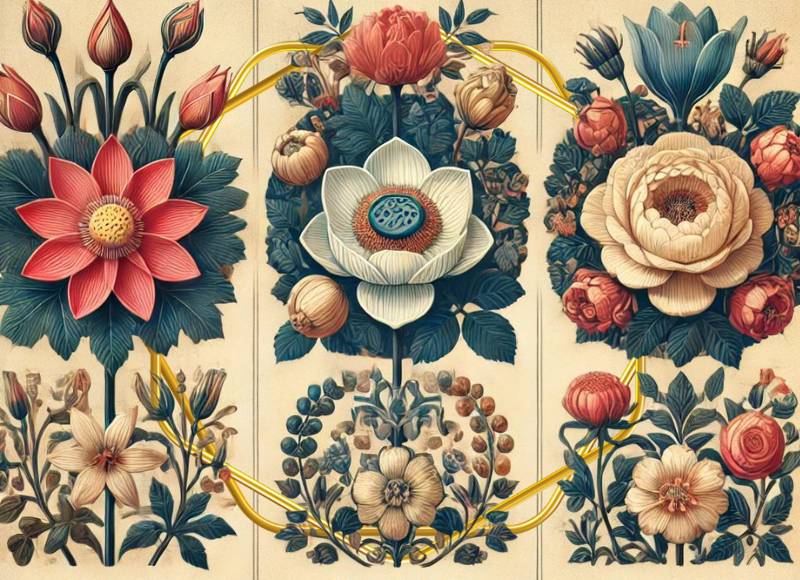Flowers have played a significant role in cultures and civilizations throughout history. They are more than just beautiful ornaments; they have been used to symbolize emotions, celebrate events, and even in medicinal practices. In this article, we will explore the fascinating history of flowers, from antiquity to the present day, and how their use has evolved in different cultures and eras.
Flowers in Antiquity
Ancient Egypt
In Ancient Egypt, flowers had a central role in religious practices and funeral rituals. The lily and lotus were especially revered. The lotus, in particular, symbolized creation and the renewal of life and often appeared in artifacts and tombs.
Ancient Greece
In Ancient Greece, flowers were associated with gods and mythology. The rose was dedicated to Aphrodite, the goddess of love, while myrtle was consecrated to Demeter, the goddess of the harvest. The Greeks also used flowers in crowns during festivals and competitions.
Ancient Rome
The Romans inherited many Greek traditions and added their own. They used flowers in banquets and celebrations, and roses were scattered in festivities known as “Rosalia.” Flowers also adorned temples and homes.
Flowers in the Middle Ages and Renaissance
Middle Ages
During the Middle Ages, the symbolism of flowers flourished in Europe. Flowers had specific meanings due to their use in Christian art. The lily, for example, was a symbol of purity and was often associated with the Virgin Mary. Monastery gardens were cultivated for both ornamentation and medicinal use.
Renaissance
In the Renaissance, the use of flowers in art and daily life gained prominence. Painters like Botticelli and Leonardo da Vinci included detailed flowers in their works, each carrying specific symbolism. Renaissance gardens were elaborate and cultivated with a variety of exotic species.
Flowers in the East
China
In China, flowers have deep symbolic meaning and are essential in art and literature. The peony is known as the “queen of flowers” and symbolizes wealth and honor. The plum blossom, which blooms in winter, represents perseverance and hope.
Japan
In Japan, flowers are celebrated in festivals and ceremonies. Hanami, the tradition of appreciating cherry blossoms (sakura), is an ancient practice that symbolizes the ephemeral beauty of life. Ikebana, the Japanese art of flower arranging, emphasizes simplicity and harmony with nature.
Flowers in the Modern Era
Victorian Era
In the 19th century, during the Victorian Era, the use of flowers reached a new level with the language of flowers, or floriography. People exchanged carefully composed bouquets, each flower and color carrying a specific meaning. Red roses meant passionate love, while daisies symbolized innocence.
20th and 21st Centuries
In the 20th century, the commercialization of flowers expanded globally, making them accessible for a variety of occasions. Today, flowers are used to celebrate everything from births to weddings, and to express condolences at funerals. Flower cultivation has also become a significant industry, with advanced technologies for growing and preserving species.
Conclusion
The history of flowers is rich and diverse, reflecting cultural and social changes over the centuries. From religious symbols in antiquity to expressions of love and friendship in the modern era, flowers continue to hold a special place in our lives. At FloresnaWeb, we celebrate this heritage by offering a wide selection of flowers for all occasions, keeping the tradition of communicating through natural beauty alive.

